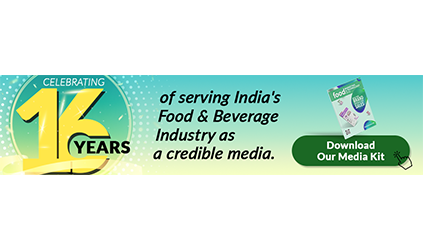The F&B industry is going through many transformations. This is where regional brands are also looking for opportunities to scale and expand their business. Meanwhile, globalisation and health consciousness-like factors create many advantages and challenges for them. Businesses targeting regional consumers can be affected by these aspects. That is why scaling such brands requires one to make sure that they are ready with marketing strategies according to the region they will target. Plus, they have to take part in communities and capitalise on local events to make a positive brand image.
Keeping all these factors in mind, we will explore some practical strategies to scale such brands and will also highlight a few case studies of successful companies.
Understanding the Regional Food Brand Landscape
What Can We Call a Regional Food Brand?
Regional food brands are referred to those who mainly focus on local ingredients, traditional recipes, and cultural heritage. These factors define the base for them, while authenticity and sustainability are their first priority. Consumers interested in quality and transparency are attracted to them the most.
The Growing Demand for Unique Flavours
There are many consumers who prefer something new and become adventurous day by day with their food choices. This is fuelling the surge of such uniquely flavoured items, which are also following regional traditions. A Mintel report shows that 45% of consumers are interested in these items—the best target for regional brands.
Strategies for Scaling a Regional Food Brand
1. Develop a Strong Brand Identity
A strong brand identity is a parameter where every dedicated company is ready to spend money and time. This is too essential to stand out in this competitive market. To do so, there are many practices one can include in their marketing, such as creating a compelling brand story and highlighting offerings’ USPs.
Leveraging storytelling requires a brand to include the initial steps they took to create it. Plus, one can discuss their inspiration and the local ingredients they use. This overall approach will help set a narrative and eventually create an emotional connection so that consumers can be more loyal. More than that, identity also includes a defined logo, packaging designs, and other materials by which the brand can make its place in consumers’ minds.
2. Leverage Social Media Marketing
Everyone is aware of how social media can shape an individual’s or brand’s image among their target audience. This is why content marketing has also been in trend for years. Following social media-related marketing practices lets a brand engage with its consumers directly.
To do so, there should be some defined criteria, which include theme, way of explaining, and messaging before producing photo and video content. These contents can be anything from showcasing products to BTS processes or even testimonials. Instagram and TikTok kinds of platforms are particularly suited for food brands.
There is another way to capture the market through social media and that is nothing more than collaborating with influencers. They can be well-known faces or specific niche influencers who can endorse your product better.
3. Expand Distribution Channels
If a brand is able to create a diverse channel to supply its products in different locations, there is no way of failing. One can start doing so by targeting local food festivals, which can be a kickstart of awareness campaigns within the community.
Proposing grocery stores and speciality shops can also boost a brand’s reach; one just has to make sure that their packaging is unique, which will help it stand out on shelves. Then, there are e-commerce websites and online marketplaces. Leveraging this in the right way can reach a brand beyond its immediate geographic area.
4. Focus on Quality Control
There is no point in marketing a product if the quality is subpar. This will not create any hurdle in the initial stage but scaling up a brand is not easy with low-quality offerings.
This can be fixed if one has defined SOPs for their production processes. These practices help make sure that flavour, texture, and presentation kinds of criteria are not compromised. Meanwhile, regular testing is also important—product safety and quality.
5. Engage with Your Community
Despite online marketing campaigns and reach, one should not overlook that the regional market is based on the local community and culture. This is why making strong relationships with them should be non-negotiable.
Brands can take part in such local events or even sponsor any related function for them. This singlehandedly increases visibility and helps show commitment. Moreover, engaging with existing consumers and asking them about products and services helps. This also makes them feel valued and gives them stats, which come into play during improvements.
6. Explore Strategic Partnerships
Alongside community, other businesses can also help increase a brand’s visibility and make it more credible. There is a type of marketing called ‘cross promotions,’ and two or more brands can do such campaigns to create a win-win situation. For instance, a brand producing sauces can partner with a local pasta manufacturer to support each other.
7. Invest in Research and Development (R&D)
Innovation is one of the main pillars for brands that want to stand out. So, one should focus on allocating a part of their resources to R&D.
More than that, marketing research contributes to it so much. By doing so, companies can get an idea of what is emerging as a trend at the time. These data will help form a better product development strategy.
8. Utilise Data Analytics
Data analytics is something that no successful company can overlook because this helps dig deeper into consumer behaviour and preferences.
Sales data can inform about which product is grabbing the market most along with seasonal trends and other essential data. So, companies can better manage their inventory accordingly and shape marketing strategies. Then, there come customer insights, which mainly require gathering data via surveys and feedback forms. This approach helps to know how the product is performing practically.
Case Studies of Successful Regional Food Brands
- Blue Diamond Growers (Almonds)
This brand is an agricultural cooperative from California and has scaled its almond products globally. Their main focus relies on quality control and marketing strategies, which helped them expand their distribution channels. Now, they are considered marketing leaders in their industry.
- Sir Kensington’s (Condiments)
Sir Kensington’s started as a small condiment company. They included natural ingredients to make high-quality ketchup as their initial products. Their main aim was to be as transparent as possible while leveraging social media marketing effectively. Their present reach is among national grocery chains while they also offer mayonnaise, dressings, and more.
Conclusion
Today’s competitive marketplace is tough to crack but still, a regional brand can go against all odds with a strategic approach. Brands have to understand what to opt for and what to avoid between tonnes of information and ideas.
More than that, consumers are also preferring more and more healthy and sustainable options. So, companies should also take this approach of becoming agile while staying true to their core values. Balancing all these factors makes a regional brand reach beyond the local market and their desired success.



